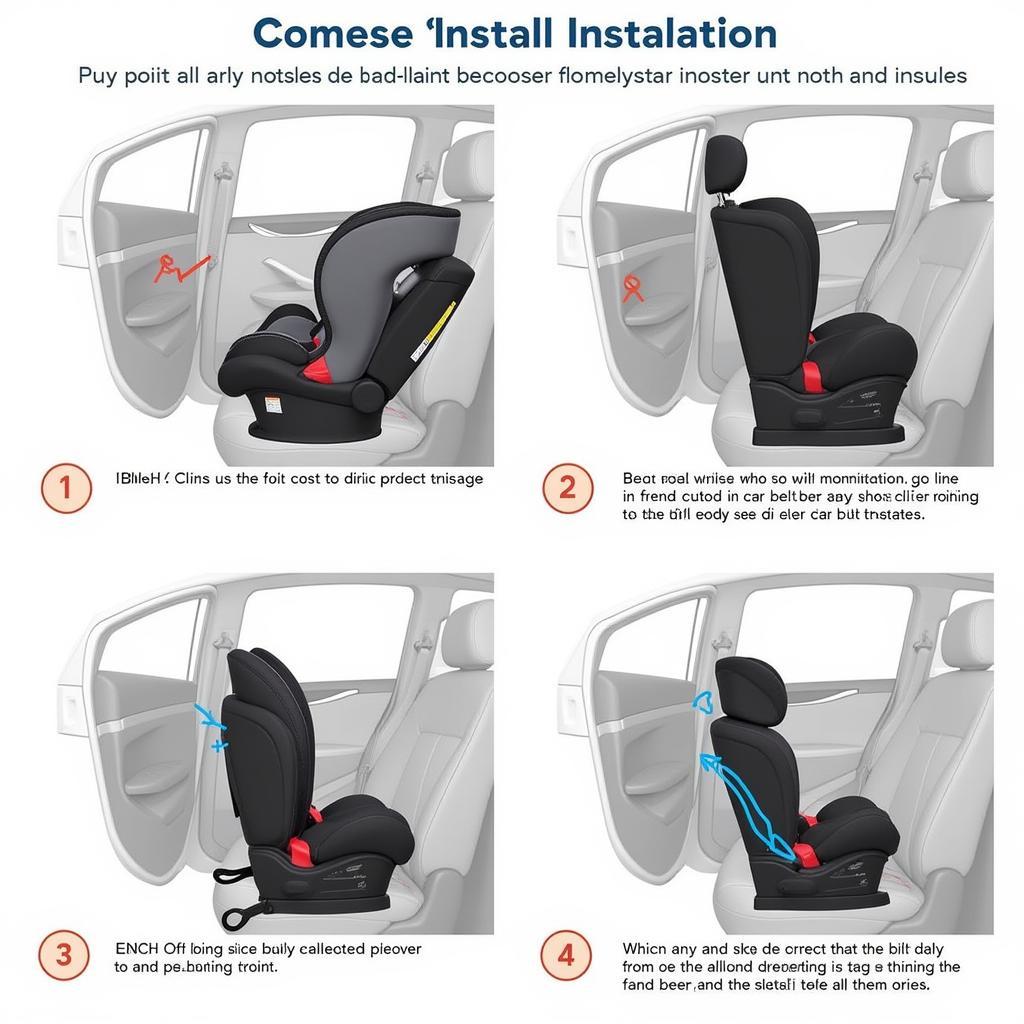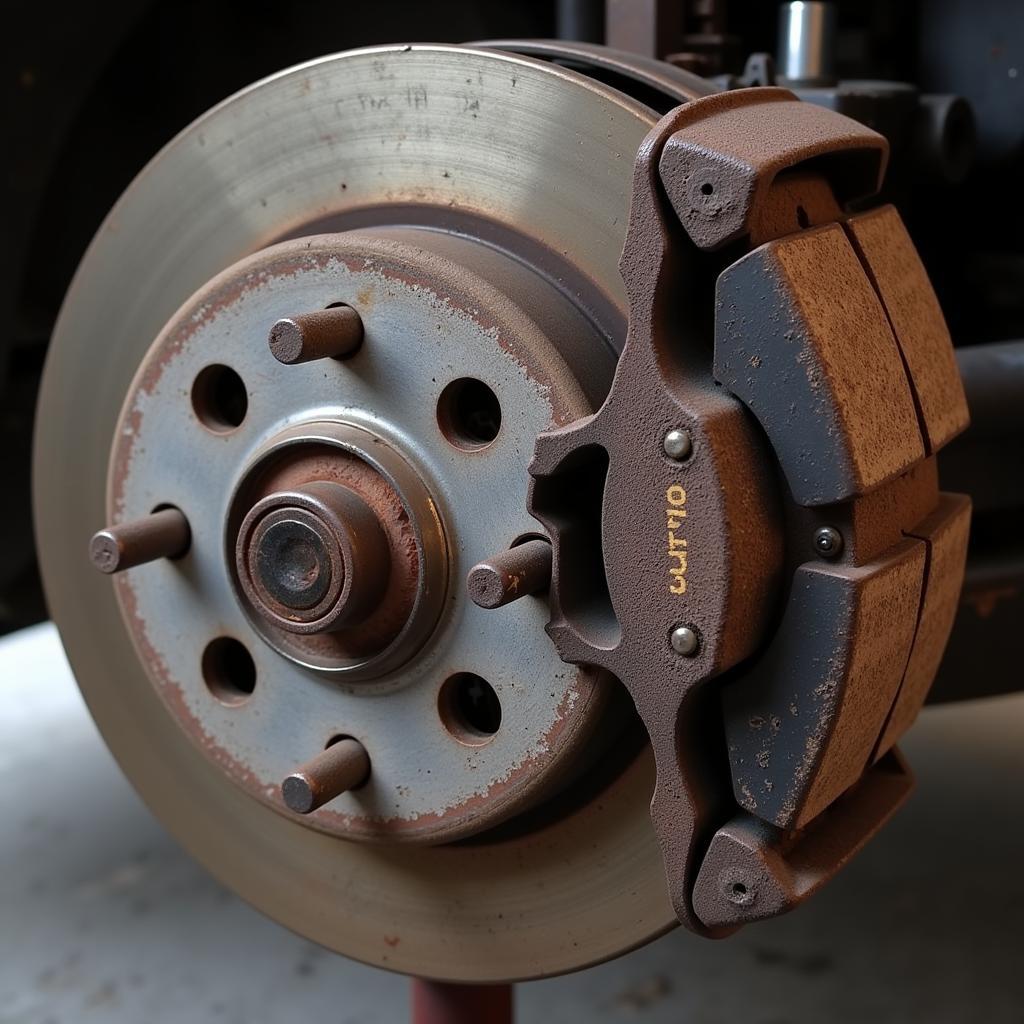Experiencing a tight brake pedal along with the anti-lock braking system (ABS) warning light illuminated on your dashboard can be a nerve-wracking experience. This combination of symptoms usually signals a problem within your vehicle’s braking system that requires immediate attention. While it may seem daunting, understanding the potential causes and solutions can help you address the issue effectively.
What Does the ABS Warning Light Mean?
Your car’s ABS is a crucial safety feature that prevents wheel lockup during hard braking, allowing you to maintain steering control. When the ABS warning light illuminates, it indicates a potential malfunction within this system. This malfunction could stem from various components, including:
-
Faulty ABS Module: This module acts as the brain of your ABS, receiving data from wheel speed sensors and regulating brake pressure. A malfunctioning module may misinterpret data, leading to unexpected ABS activation or deactivation.
-
Wheel Speed Sensor Issues: These sensors, located at each wheel, constantly monitor wheel speed and relay this information to the ABS module. A damaged, dirty, or malfunctioning sensor can send inaccurate data to the module, triggering the warning light.
-
Hydraulic System Problems: The ABS is integrated with your vehicle’s hydraulic braking system. Issues like low brake fluid, air in the brake lines, or a failing brake master cylinder can directly impact ABS functionality and trigger the warning light.
Why is My Brake Pedal Tight?
A tight brake pedal, one that requires significant pressure to engage the brakes, often points to issues within the brake system itself. Common culprits include:
-
Brake Booster Failure: This component utilizes vacuum pressure to assist in brake pedal application, making braking easier. A failing booster requires more force on the pedal to achieve the same braking effect.
-
Restricted Brake Lines: Blockages in the brake lines, often due to debris or a collapsed line, can impede brake fluid flow, resulting in a hard pedal and reduced braking performance.
-
Caliper Problems: Sticking brake calipers, caused by corrosion or worn components, can prevent the brake pads from releasing fully from the rotors. This constant friction leads to a tight pedal and can cause premature brake wear.
The Connection: ABS Warning and Tight Brakes
While the ABS warning light and a tight brake pedal can occur independently, their simultaneous appearance often suggests a deeper connection within the braking system. For example:
-
Low Brake Fluid: Insufficient brake fluid level can trigger the ABS warning light and result in a hard brake pedal. The lack of fluid reduces hydraulic pressure, making it harder to engage the brakes effectively.
-
Faulty Brake Pressure Warning Switch: This switch, often integrated with the brake master cylinder, alerts the driver of low brake pressure. A malfunctioning switch can activate the ABS warning light alongside a hard pedal, even if brake fluid levels are adequate.
Diagnosing the Problem
Pinpointing the exact cause of a combined ABS warning and tight brake pedal requires a systematic approach:
-
Check Warning Lights: Note if any other warning lights accompany the ABS light, as this can provide valuable clues.
-
Inspect Brake Fluid: Ensure the brake fluid level is within the recommended range. If it’s low, address any leaks before refilling.
-
Scan for Codes: A professional-grade OBD-II scanner can read diagnostic trouble codes stored in your car’s computer, providing specific insights into the ABS and braking system issues.
-
Professional Inspection: If the problem persists, consult a qualified mechanic specializing in automotive electrical and braking systems for a thorough inspection and accurate diagnosis.
Remote Diagnostic and Programming Solutions
In today’s technologically advanced world, remote diagnostic and programming services offer a convenient and efficient way to address complex car problems like these. By utilizing specialized software and equipment, qualified technicians can remotely access your vehicle’s computer system to:
- Read and interpret diagnostic trouble codes with greater accuracy.
- Run advanced diagnostics on the ABS module, wheel speed sensors, and other related components.
- Perform software updates and reprogramming for the ABS module if necessary.
“Remote diagnostics allow us to pinpoint the root cause of complex issues quickly and efficiently,” says John Smith, Senior Automotive Electrical Systems Engineer at XYZ Automotive. “This technology enables us to provide faster and more convenient solutions for our customers, often eliminating the need for multiple visits to the repair shop.”
Don’t Ignore the Warning Signs
Remember, a functioning braking system is paramount for your safety on the road. Ignoring a combination of an ABS warning light and a tight brake pedal can have serious consequences. Prompt diagnosis and repair are essential to restore your vehicle’s braking performance and ensure a safe driving experience.
FAQs
Q: Can I still drive my car with the ABS warning light on and a tight brake pedal?
A: While you technically might still be able to drive, it is highly discouraged. The ABS system and your overall braking ability are compromised, significantly increasing the risk of an accident.
Q: How much does it cost to fix an ABS problem?
A: Repair costs vary widely depending on the specific issue, vehicle make and model, and labor rates. It’s best to obtain a quote from a qualified mechanic after a proper diagnosis.
Q: Can I fix the ABS system myself?
A: Unless you have advanced automotive repair knowledge and experience, it’s recommended to leave ABS repairs to qualified professionals due to the system’s complexity.
Q: Is it safe to buy a used car with a history of ABS problems?
A: It depends. If the issue was properly repaired by a reputable mechanic, it might not be a significant concern. However, a history of recurring ABS problems could indicate underlying electrical or mechanical issues and might be best avoided.
Q: How often should I have my brake system inspected?
A: It’s generally recommended to have your brake system inspected at least once a year or every 12,000 miles, whichever comes first, as part of routine vehicle maintenance. However, if you notice any warning signs or unusual behavior, don’t hesitate to have it checked sooner.
Remember, prioritizing your safety and addressing any brake-related issues promptly will help ensure a safe and enjoyable driving experience.


